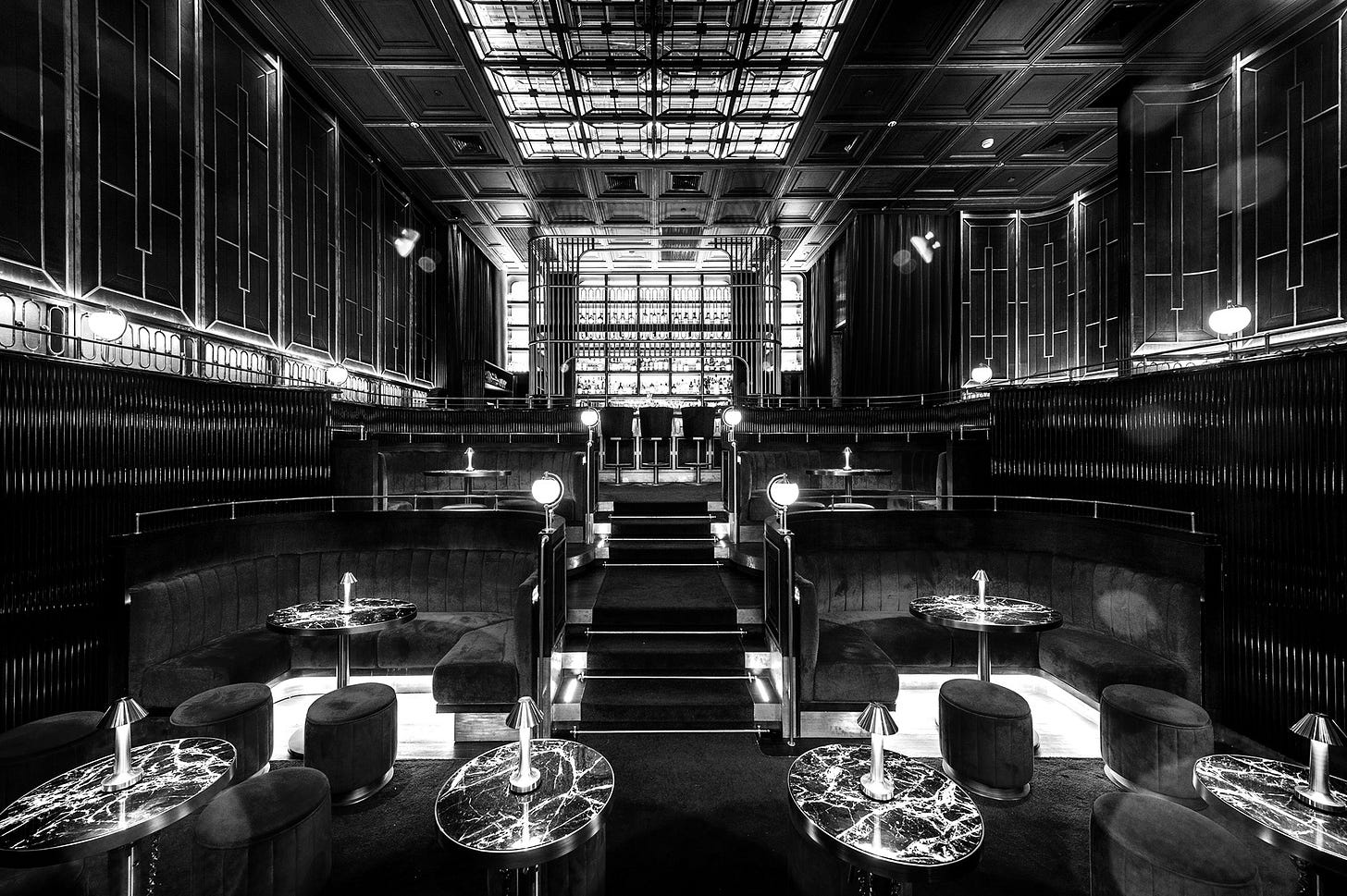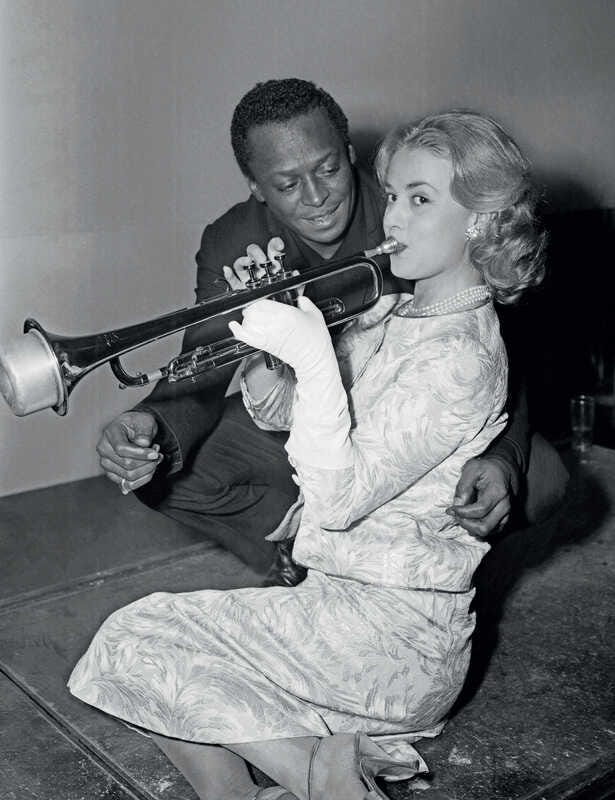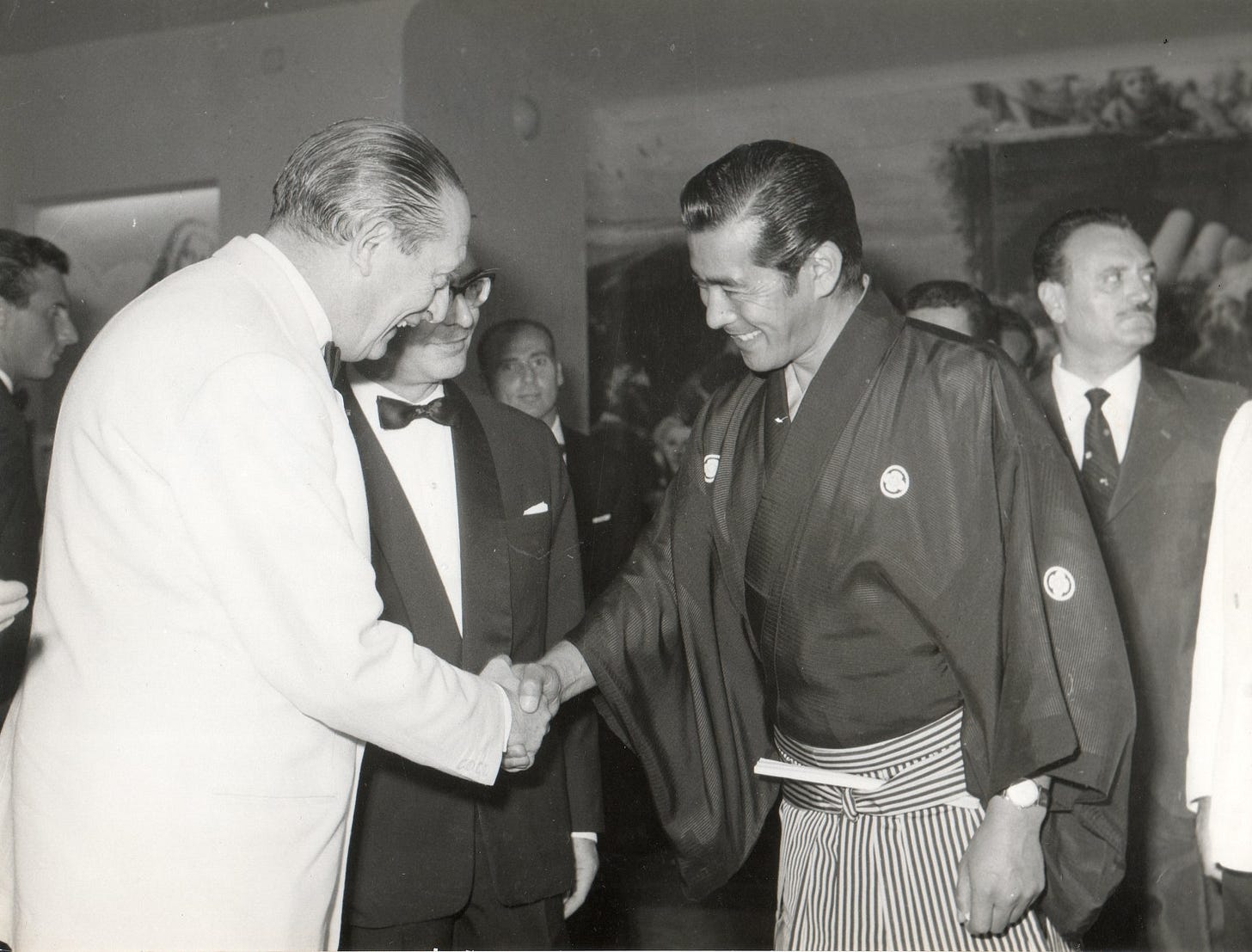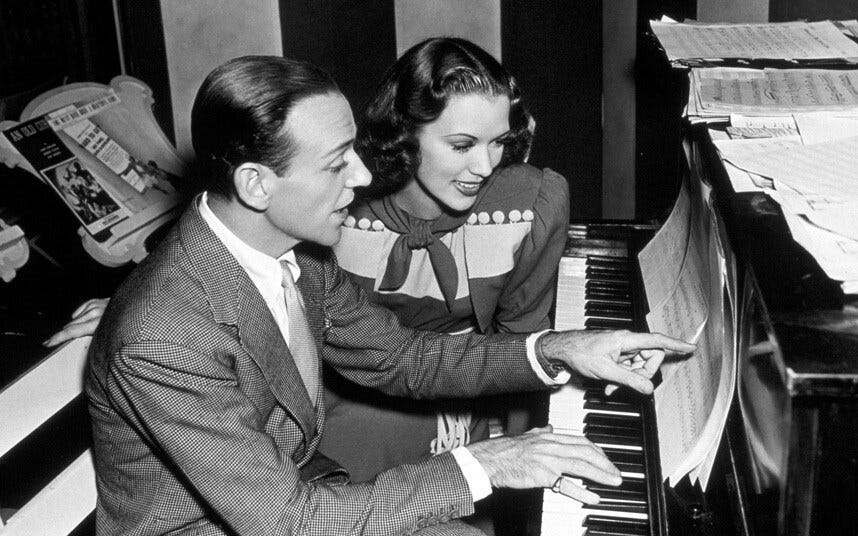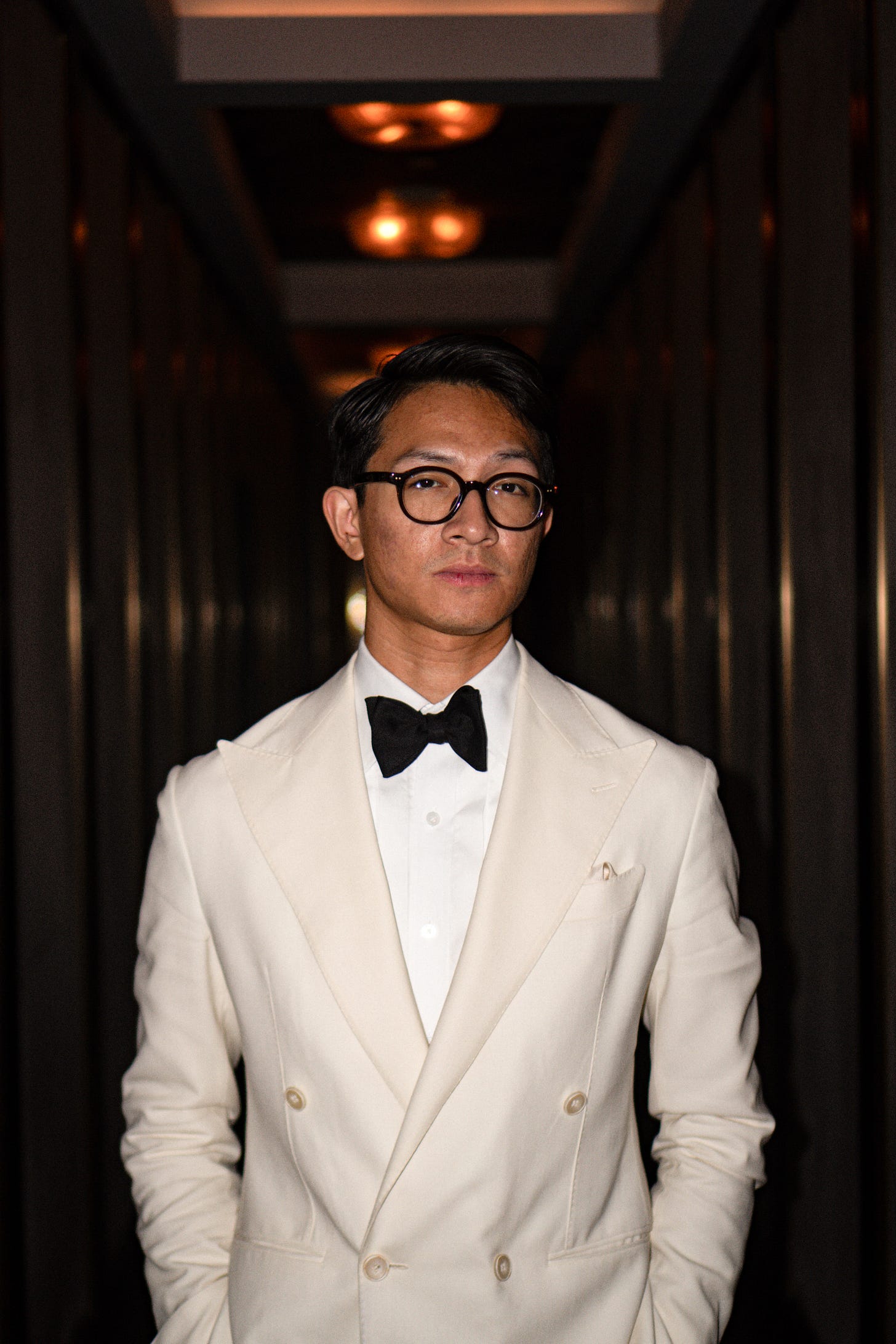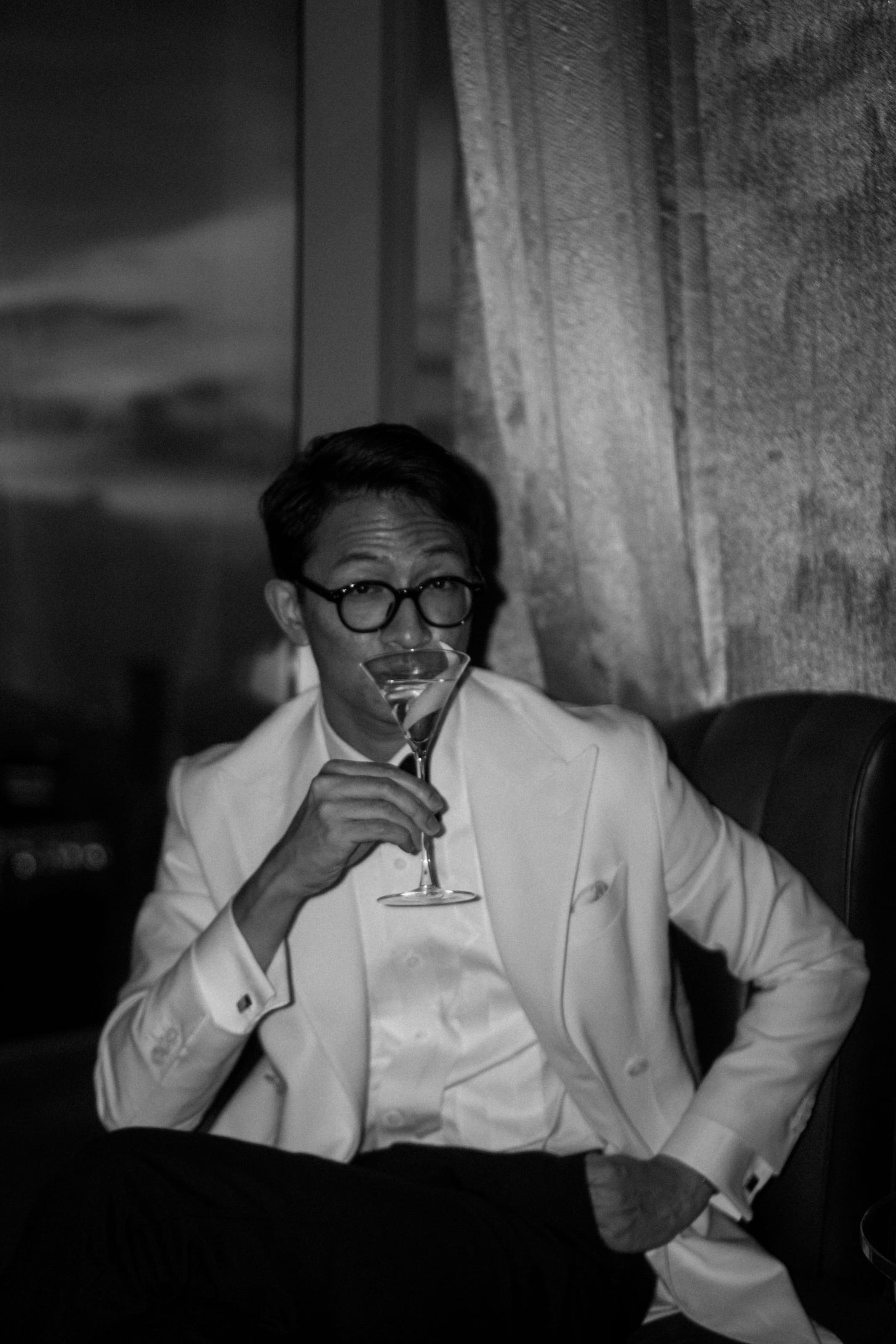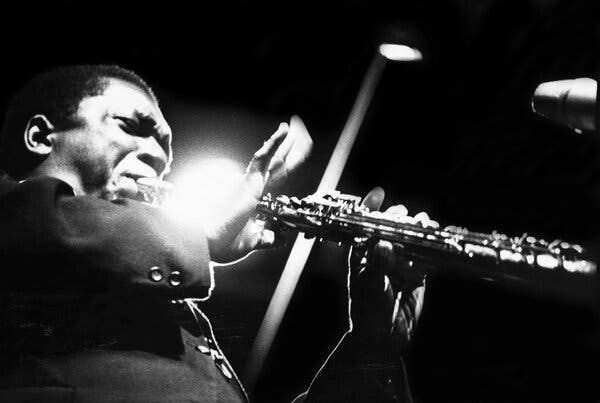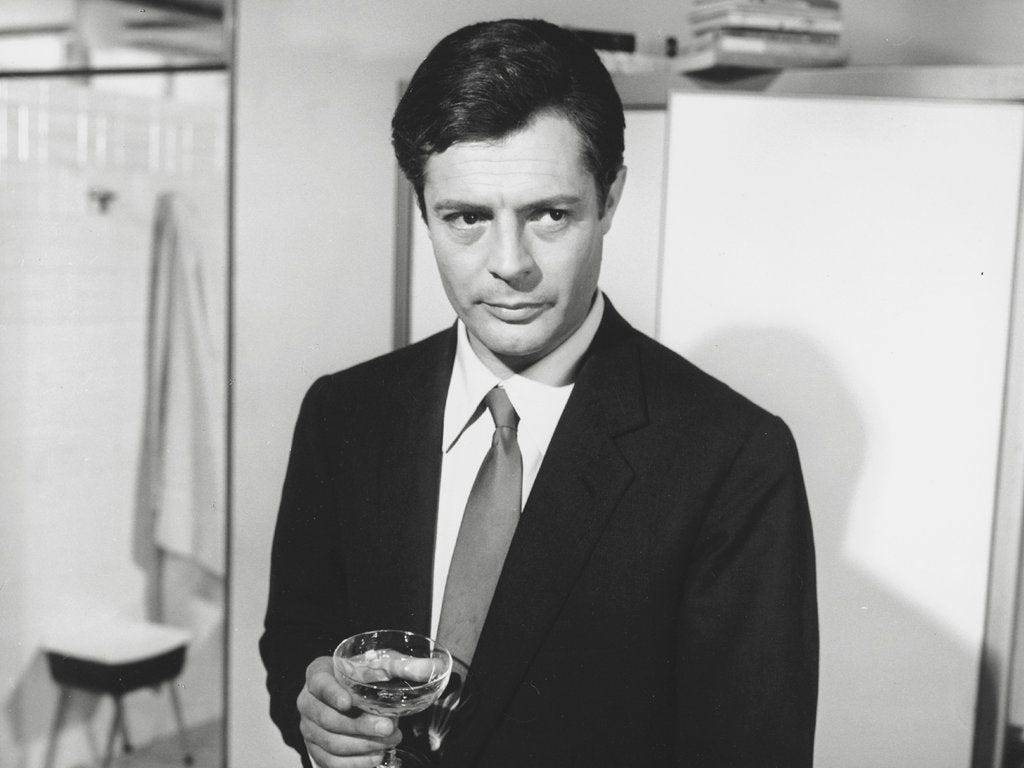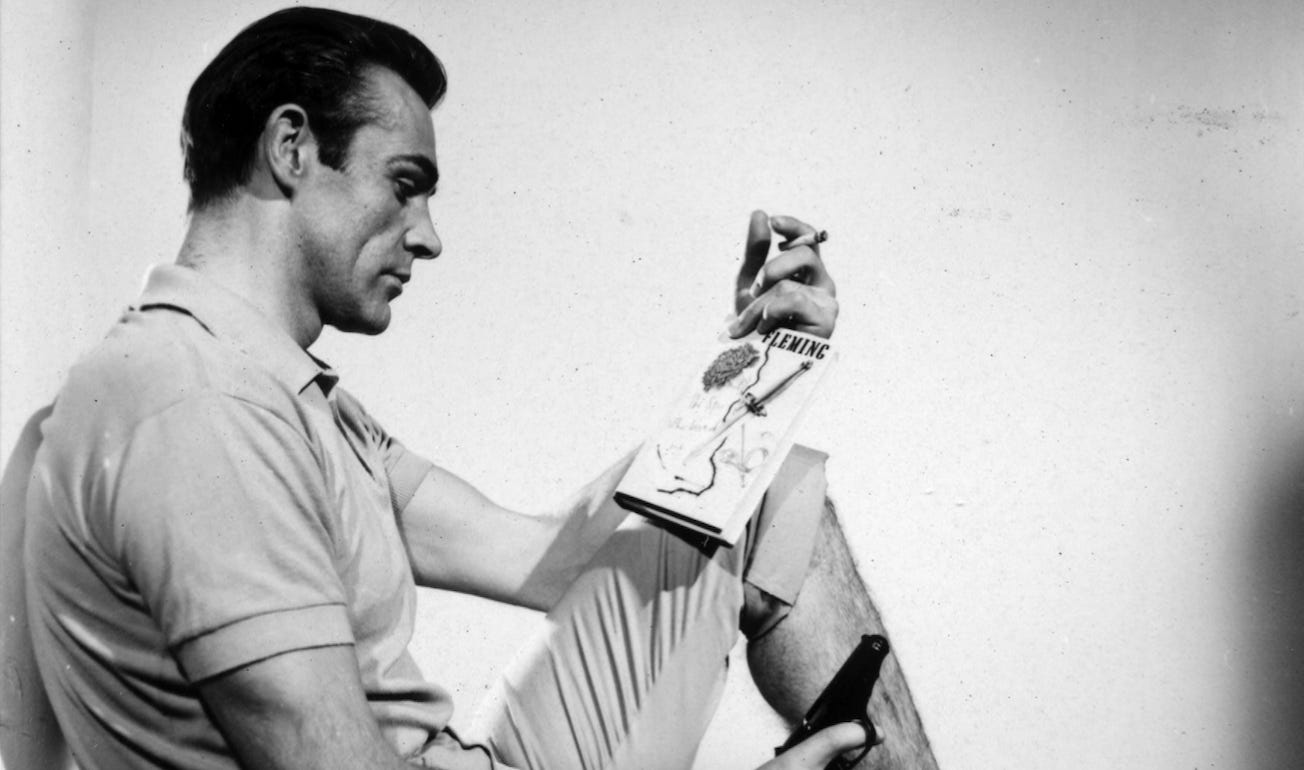The Death of the Gentleman (And the Culture That Died With Him)
The Thing is....You Can Bring It Back
Let me tell you a story…
In the past week, I had a chance to visit one of the notable jazz bars in Bangkok — and it’s my usual one where I always dress up.
This place is one of the few in town that offers a live performance of a jazz quartet — including saxophone, piano, bass, and drums. A nod to the mid-century era of jazz as it should be — alive from 8:30 p.m. to 11 p.m.
What’s special is that this time, I went there with my friend and we stayed till the very last voice of saxophone, the last beat of the drum, and the curtain on the stage closed down.
But… after I walked my friend to his transportation, I decided to sit there for a while… one factor being that I happened to meet a lady in a red dress who sat beside me.
Something special is that I asked her how she felt about this place — and she amused me by saying she didn’t like it — because the people at this place came for vanity. 90% of them did not even listen to what the four musicians were playing but only took photos or videos to upload to their Instagram, then went back to chatting with their friends or scrolling their phones.
(I admit, after she said that, it intrigued me a lot.)
Next, I asked her, Then why sit until this late at night? — and she just told me that she was with her friend, and it was her friend who teased that the real fun would begin after 11 p.m.
I was confused — because I had once thought that the only live performance was the jazz quartet during 8:30 to 11 p.m.
But just a moment after that thought, some sound began rising.
Not the kind of pure instruments — but something that came from electronics… and ten seconds later, the velvet curtain on the stage that had once closed was opened again.
What I saw was a group of pop band members, 2–3 singers, and a song of Hip-Hop R&B.
Then suddenly, the place that once resembled the glamour of the jazz age was turned into a high-end pub.
The same group of young people who had just snapped moments but didn’t engage with the jazz quartet were now standing, dancing, and expressing their energy.
And yes, I was sitting right there, dressed in an ivory wool double-breasted jacket and black silk grosgrain bow tie — and I decided that my time had come.
I then said good night to the lady in the red dress and her friend — paid the bill, and walked out from the place that had transformed into a modern circus.
Along the boulevard, walking in this black tie ensemble, I thought to myself:
"The end of classical culture is truly happening."
The Death of Classic Culture
Apart from the lack of appreciation for pure instrumental performance that was happening at this jazz bar…
I just discovered that less than 80% of people at Festival de Cannes — one of the most prominent annual film festivals of all time — do not know the substance behind the beauty of a gentleman named Alain Delon — or even know of his existence in the first place.
These incidents in the 2020s made me reflect on the symbolic death of classic culture — that icons, ways of life, and creations from the bygone era are disappearing name by name, entity by entity:
Sean Connery in 2020…
Monica Vitti in 2022…
Alain Delon and Anouk Aimée in 2024…
These ladies and gentlemen — who resembled all virtues from a bygone era — have left only their names and perhaps a symbol that the era of classical elegance has gone with them.
But, as famously said by George Bernard Shaw:
“The reasonable man adapts himself to the world; the unreasonable one persists in trying to adapt the world to himself. Therefore all progress depends on the unreasonable man.”
If you clicked to read this post, I do believe that inside you holds a similar virtue to mine and other aspiring modern gentlemen.
The idea of classical masculinity, of living an artful life, of reclaiming the way of being that modern day seems to have stripped away from us.
And if you want to stop being just a commentator or complainer about modernity, but actually be a part of the change — a voice for classical elegance that stays true to virtue and ideally preserves what Connery, Grant, or whoever your role model of a gentleman is — then I invite you to The Beginning After the End — the way of classical life that preserves classic culture.
Culture as an Underrated Element in Life
I once teased the idea and importance of culture in my past post — How to Actually Become a Gentleman — which is, basically, a crucial aspect of one’s character that the modern-day agenda seems to underrate and talk down on.
When you think about modern preaching by mainstream media or even mass YouTube channels — what do they actually tell men to do?
“Get big muscle and money — then you will get everything you want. Fail to do so, and you’ll face a lifetime of misery.”
As ever, there’s nothing wrong with those — but my objection to this is:
Why solely focus on those and bet everything on them to achieve happiness or a fulfilling experience in life?
What about the interest in cultural aspects — particularly ones that require deep understanding and depth for appreciation?
Because this term Culture — when you look at the bigger picture, it’s the thing that humanity, at a specific period, has created to form a collective identity within society.
It’s the thing that gives life meaning — gives the passion, romance, tension, conflict — the taste and feeling of being human — the only species on earth capable of creating the thing so-called civilization.
So… as a gentleman — a man who pursues excellence through internal character and external appearance — culture is the thing that he always cultivates into his being.
But here lies the problem.
Back to the consensus meaning of culture — if it’s the thing that humans at a specific period (and this is the point) have created to form a collective identity — it means that culture at any given moment comes from the people of that era.
And that… perhaps is the root cause of our problem.
Since the current reality of modern-day life is that people are shaped by a digital-age environment that favors speed, casualness, comfort, and surface-level content that’s easy to digest…
That leads to the modern culture you’re probably familiar with…
A hip hop rapper whose lyrics revolve around sex and drugs
A hookup culture that destroys the allure of romance between humans
A comfort-addicted attire that lowers the standard and effort of how one puts on clothes
This is why you’re allured to the image of classic culture — from jazz that requires attention to feel what’s happening on stage, to the traditional dynamic of masculine and feminine energy that makes a date more than just an awkward interview followed by scrolling phones — also the art of sartorial elegance, the classic style approach to how one dresses and presents himself.
And… when it comes to this idea of classic culture, there will always be an objection along the lines of:
“That’s classism!”
or
“Do you think you’re better or living higher than us?”
or
“Who are you? Mr. or Ms. Aristocrat?”
Well…if these lines are occurring in your mind (which I hope not), or you fear others will think of you this way when you cultivate classical culture and live an elegant way of life…
Here’s my antidote philosophy:
As long as you truly are curious, interested, and willing to deeply understand and appreciate a specific culture — no matter how noble it sounds — you will eliminate the act or feeling of pretentiousness from your dictionary.
Because in the end, you can’t control the opinions of others — especially the masses who consume modern culture day in and day out.
If you want a full breakdown of how I do it — then check out this article.
With that said, at this moment, you should have clarity on two things:
Cultural intelligence is not a waste of time and is equally crucial — just as money and muscle
Classic culture is a noble pursuit that can be truly appreciated without being seen as pretentious
Now, let me show you the beauty of embracing classic culture and cultivating it into your life as a gentleman.
Association of Classic Culture and the Gentleman Archetype
“Without culture, and the relative freedom it implies, society — even when perfect — is but a jungle.” — Albert Camus
If culture is basically a collective set in the way of life and values of a specific group of people — then for a gentleman, an archetype that reflects timelessness, class, and elegance — so does it reflect through the culture he consumes and cultivates.
Back to the 20th century, where the terms ‘ladies and gentlemen’ were once an aspiration and righteously described men and women of those eras — here is the culture that reflected their virtues:
The act of intentional dressing up through thoughtfully designed clothes
Cinema that served as the ideal aspiration or the stylish mirror of current life
Music that required presence and depth of emotional intelligence to feel it
Fine art that goes beyond a prompt or 10-second generation or replication
Gastronomy that required patience, knowledge, and manners to appreciate
These are a few examples of culture that once flourished during the bygone era.
Now, let me ask you this:
“What are the intersections between those lists?”
“What is the difference between them and modernity?”
The answer lies within the depth and substance in each of them.
Just look at the empirical entity such as The Act of Dressing Up Through Thoughtfully Designed Clothes.
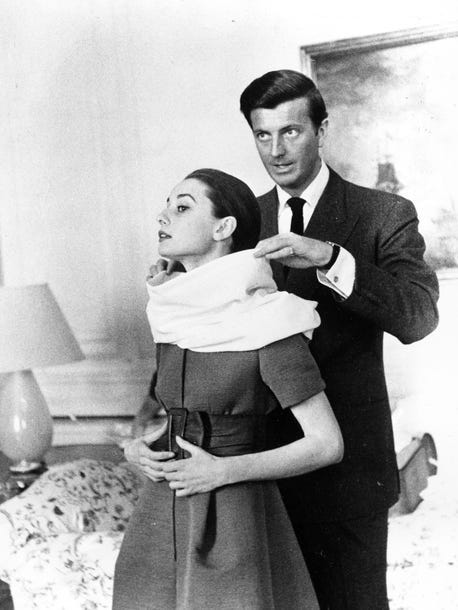
For gentlemen, it’s classic menswear; for women, that could be a high-quality garment that sang during the Golden Age of Haute Couture.
The thing is — if you’re like me, someone who truly appreciates and lives daily in classic sartorial ensembles — you’ll know that you cannot merely pick up clothes randomly like modern men do.
When you begin your sartorial journey — it’s normal for you to gradually deep-dive into the sartorial wisdom of garment types, color combinations, and fabric fundamentals — which I and many connoisseur people I know began the same way.
All of which leads to a true understanding of narrative, purpose, know-how, and the endless ways of self-expression that reflect the core virtues a man holds onto.
This is why classic style has always resonated with the term “gentleman” — it’s a style that requires depth and substance to truly embody and pull off with ease in one’s own skin.
(Speaking of which, I’ve got a free eBook on this)
When you decide to embrace classic culture and find a way to integrate it into your current life — the missing component that was once lost within men at some point will return: characteristic.
From what I once mentioned in a past video, the problem with modern men (especially the younger generation) is that money and muscle tend to be the only things they exist for.
I know — they are the currency of status, the symbol of power to fix their problems, which are dating and loneliness. But life is more than that — (one with fulfillment and richness in experience, I mean.)
Because, whenever the name James Bond comes up — apart from the irresistible charm and sartorial elegance — one thing that makes him the gentleman of an era is the character that was full of cultural cultivation:
He knows the source and components of whiskey by smell
He recognizes the Stradivarius with an instant glance and ear
He notices the famous Portrait of the Duke of Wellington painted by Goya that was once stolen in 1961
All of these make this man not only contain the logical, calculated, utilitarian expertise — but the intellectual knowledge of cultural affairs that makes his life interesting, charming, and unpredictable.
Of course, this 007 analogy is just an assumption based on fiction — but as I’ve always firmly believed — there’s nothing wrong with aiming for the ideal in life and developing oneself to that position, as long as your biology is still capable of doing so.
So… with that said, allow me to give you: classic tradition and culture for cultivating a character full of depth and substance — that the present day seems to have forgotten.
1. Evening Wear as Ritual
The first one is bringing back the evening wear — and treating it as a ritual.
From what I teased at the beginning of this video, about the attire you’re seeing right now — the black tie ensemble.
Brief history: the act of wearing a dinner jacket and black bow tie was once glorified during the late 19th century to the mid-20th century.
Back then, gentlemen and ladies were restricted by the norms of evening social life — and the act of changing from daytime garments to evening ones.
Before the popularization of black tie, the white bow tie, with long tailcoat and white piqué low-cut waistcoat — a.k.a. the white tie — was the appropriate choice for evening wear.
But… as human nature always lies, we are creatures that somehow always find a way to make things more comfortable — thus, the birth and eventual decades-long adoption of the black tie.
And by the Golden Age of Menswear in the 1930s, the dinner jacket and black bow tie had become a staple of evening wear.
Back then, if a man walked in town without wearing a dinner jacket and black bow tie — people would consider that he had just finished work and was heading home, or that he was a non-conformist individual within society.
Fast forward to 2025, and the idea of black tie is reserved for high-society galas or middle- to upper-class weddings.
A sacred garment, so to speak.
Now, the idea that I propose is to bring the act of evening wear back once again.
Because, gentlemen — apart from the hidden purpose of social classification and the distinction between people who have means or not — evening wear reflects the idea of treating life as a deliberate stage to perform upon.
Think of this: in the daytime, you go to work with a specific uniform that exists for the function of serving the capitalist society — one that might not necessarily serve your own.
But in the evening, when you decide to go back to your place, take a shower, groom yourself, and put thoughtful intention into changing your attire — one that matches the evening you curate and are willing to live through — that’s the act of sovereignty — especially among the overly casual masses.
Now, here comes the beauty of it:
Evening wear in 2025 doesn’t have to mean black tie (though that remains the perfect symbol of the ritual).
It can simply mean changing into a dark-toned jacket, well-tailored trousers, and black leather footwear. Or even changing into a dressing gown for a sophisticated leisure moment at your place — all of this, just as a weekly ritual.
Still, if you desire to deliberately wear black tie as your evening garment ritual — here’s my personal know-how to do it right within the context of appropriateness.
One thing you gentlemen must embrace is that whenever you wear this (even in a place that defines black tie as the proper dress code), you will feel strangely uncomfortable.
Even for me — who can firmly say that I’m comfortable wearing suits, tailored jackets, and leather footwear on a daily basis — when I wore and walked through the city in my current black tie ensemble for the first time, I sensed pressure and had a little to moderate insecurity.
But the secret here is to choose a place that perfectly matches and aligns with the black tie ensemble.
Whenever I wear this, I always ask this question:
“Which place, 100 years ago, would men wear this to?”
And here are the places where I’ve worn them and enjoyed my presence so far:
A rooftop cocktail at a 5-star hotel like Waldorf Astoria
A high-end jazz club decorated with old-world atmosphere
A private party among sartorial enthusiasts
These are places where, even without a restricted dress code, it is appropriate for you to wear what people know as a tuxedo.
In the end, the act of reviving an evening wear ritual will make you more deliberate, set apart from the current norms of society.
It allows you to experience a totally different state of mind — distinctly separating your daytime duty from your evening-time leisure.
And that… is what gentlemen and ladies from the 20th century always experienced — a life well lived that contained intention, with class.
2. Music with Intention
The next cultural aspect I would suggest is to approach great music with intention.
Because based on the story I told you at the beginning of this post — people these days don’t treat music with the full attention it deserves anymore…
Especially the kind that requires presence and emotional intelligence.
As for the type or genre of music — while I don’t believe it’s reserved only for classical orchestra or jazz — these two are great ways to cultivate your ability to appreciate the emotion behind notes and instruments.
To feel and be part of the sphere created by notes, symphonies, lyrics, and stories of a musical piece — you are required to bring these specific things:
Fundamentals of Genre: to know the basics of how each piece is performed
Narrative & Background: to understand the context that allows you to immerse in the piece
Presence in Macro & Micro Scale: to be able to switch between the big picture of performance and the focused awareness of a specific instrument or verse
Let’s look at jazz, for example.
If some of you here want to explore and start listening to this kind of music — here’s the frame I want to show you:
For the Fundamentals of Jazz, it’s about knowing the basic ensemble components: how many instruments are there within the band, and which type of jazz features how many members — this will shape the feeling and your expectation of what you can get from the piece.
For Narrative & Background: in jazz, it’s about understanding its roots — as a communication tool among diverse groups (Black people, to be precise). Over time, it transformed into a grand pop culture and evolved in many directions.
But understanding jazz as a communication tool will automatically give you the context for why improvisation is so natural — and why the same song is never played the same way twice.
For Presence in Macro & Micro Scale: it’s the ability to shift perspectives within a song. In a live performance, especially in jazz, there will be moments when the ensemble harmonizes as a singularity — and moments when each musician gets their own time to express their feelings and communicate. This also applies to classical orchestra, classic rock, or even some modern-day pop music.
And that, gentlemen, is how to approach music from a different angle — to make it more than just background noise… but a moment to appreciate.
3. A Drink for the Day
The next one that I would like to propose is to integrate a drink for the day.
Now, I know that we can both agree — alcohol is unhealthy, both physically and mentally (in cases of overconsumption).
But whenever you think of an activity that ladies and gentlemen would do in the evening — either at their residence or outside — it’s drinking with civilization.
The difference between drinking culture back then versus nowadays is about the sense of control.
Nowadays, the masses approach alcohol as a liquid for escapism and hedonism — to let it take control over themselves — which leads to excessive consumption.
And the result of that act is the undesirable consequences you can see daily.
Compared to the classic culture of a drink for the day — it was usually just one glass of great whiskey, brandy, bourbon, wine, or a cocktail by the evening or night.
The beauty of liquor, when we set aside the fact that it dilutes our perception, is the depth of making it. From the source of production, method of processing, years of brewing, and way of consumption — it leads to thousands of possibilities to taste and enjoy the art of liquid making.
When you consider the depth and complexity of liquor and integrate it as a part of your evening ritual — it reinforces the fact that you are the one using it and controlling it — not letting it take over you.
This can take the form of a weekly celebration (which can be combined with the ritual of evening wear) — through a delicate drink, either an 18-year Macallan in a tailored English drape suit or a dry martini in a black tie ensemble.
The rationale behind this act — apart from letting you slow down and gain introspective time to appreciate the moment through a drink — is that it allows you to tap into a state of mind called the Default Mode Network — an open state that enables your unconscious mind to creatively work for you, helping you come up with bright ideas for your life.
4. Read the Classic Text
Now, the last one I will leave you — the cultural aspect that a gentleman once always integrated and cultivated — is: read the classic text.
If you’re watching this far, which I truly appreciate… I’ll take it that you’re already familiar with books — either fiction or nonfiction — and read them as a part of your life.
But for a long time, I was obsessed with modern-day trendy books, hyped by digital-age society… mostly direct self-help, business-focused, productivity hacks, or societal critiques.
While I adored them — since they were an eye-opening experience into how reading could affect a man’s mind — especially from authors like Cal Newport, Ray Dalio, Adam Grant, or Steven Kotler…
But when I shifted my identity into that of a classic gentleman (which I talked about and teach the precise know-how of in The Narrative Shifter, linked in the description), I began to explore texts and literature from a bygone era — just like the style and virtues I embraced.
Fast forward to now — and I’ve come to understand the allure of these classic texts that modern books simply cannot give…
From the timeless wisdom they offer, the poetic and artistic use of language, to the broader context and narrative understanding of the era they were written in…
This applies to nonfiction writing — from millennia-old texts like Meditations by Marcus Aurelius, to centuries-old works like Beyond Good and Evil by Friedrich Nietzsche, to mid-century thinkers like Albert Camus or Jean-Paul Sartre.
And also to fiction — which I once despised for a long time due to the belief that nonfiction was more productive (and yes — the real answer is: it depends on what kind of fiction it is).
My current exposure to classic literary fiction lies most with the name F. Scott Fitzgerald — Since I actually started with his breakthrough This Side of Paradise, then his magnum opus The Great Gatsby, his unfinished piece The Last Tycoon… and right now, I’m on the way to finishing Tender Is the Night.
And what I find myself drawn to in Fitzgerald’s writing is beyond just his tone of voice — but the similar lens of society that both he and I seem to view the current reality through.
He allows me to emphasize the idea of solitude among the masses, to see that the early 20th century was not all romantic and glamorous — and to learn from him about the drive of ambition, and the danger of letting others blind you from your purpose.
Basically, classic texts from a bygone era will give you the history, timeless wisdom, and exposure to human life that can no longer be discovered in the 21st century — all at once.
So, gentlemen — with these four cultural tradition revivals:
The return of evening wear
The depth in approaching music
The presence of a drink in the evening
The exposure to classic texts
I do believe it will set a great anchor for you to experience life as a gentleman — one not only purposeful and productive — but one that walks through life with taste, style, character, and class — wrapped in a term so called cultural intelligence.
That’s all for this one.
I hope it gave you what you seek — and as ever, I wish you a great day.



